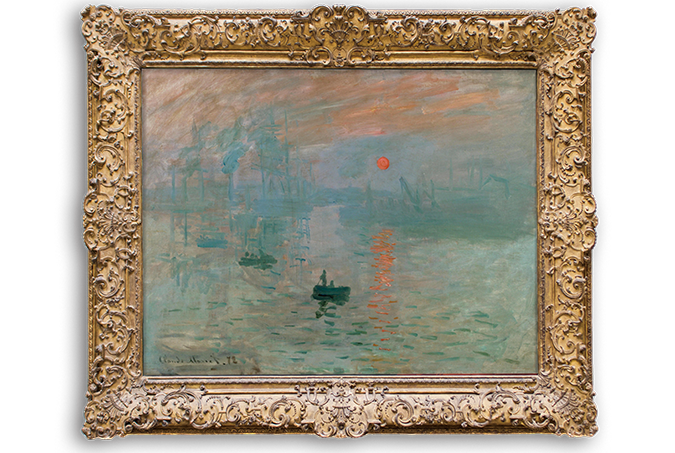

Amid all the praise that our generation has heaped on French Impressionist painters, it would be hard to imagine that one and a half centuries ago, they were seen as pariahs in the Parisian art scene.
Back in the mid-19th century, a French painter’s career hinged on getting one’s work shown at the Salon in Paris, the official art exhibition of the French Academy of Fine Arts. In determining whether to accept a painting, the jury of the Salon clung to a specific set of selection criteria based on the aesthetics of the Academy. History paintings, for example, were considered superior to genre and landscape paintings. There were also rigorous requirements for the technique of drawing. As noted by Sue Roe, an art historian, paintings had to be “microscopically accurate, properly ‘finished’ and formally framed”. Predictably, the Salon was a showcase of paintings of historical, mythological or allegorical subjects depicted in exceptionally fine detail.
In 1868, Claude Monet, Pierre-Auguste Renoir and Frédéric Bazille—who would eventually become notable figures in Impressionism—got past the scrutiny of the jury and had their works exhibited at the Salon. Yet, the floundering careers of these young painters did not turn around. In each edition of the Salon, several thousand paintings were displayed from floor to ceiling. The best ones were placed at eye level, easily catching the viewer’s attention. The less preferred pieces, as in the case of Renoir’s Lise with a Parasol, were “skied”—hung near the ceiling—making it almost impossible for the viewer to have a closer look. So, just when it seemed that they had broken into the inner circle of recognised artists, the trio still found themselves to be outsiders among the elite.
The disillusioned painters realised that their artistic pursuits were incompatible with the mainstream art world. Instead of drawing imaginary warriors, angels and goddesses in a studio, they were more interested in sketching landscapes, seascapes and cityscapes on the spot. With the invention of portable tubes of paint and folding easels, artists were able to paint en plein air (in the open air), transcribing the elusive moments of everyday life onto the canvas. The newly available flat-tipped brushes also allowed them to work more effectively and enjoy a greater flexibility in technical experimentation on light and colour.
From April to May 1874, Monet and his fellow artists held their first group exhibition, which showed 165 works. It was almost unanimously panned by visitors and the press. One of Monet’s paintings on display, Impression, Sunrise, was a particular eyesore for Louis Leroy, an art critic of a satirical magazine. He mocked this painting by making wordplay with its title:
Impression — I was certain of it. I was just telling myself that, since I was impressed, there had to be some impression in it…and what freedom, what ease of workmanship! A preliminary drawing for a wallpaper pattern is more finished than this seascape.
By deriding Monet and his comrades, Louis Leroy inadvertently gave their artistic movement its name. The group embraced the term with open arms, even using “Exhibition of the Impressionists” as the title of their third exhibition in 1877.
From 1874 to 1886, the Impressionists put together eight exhibitions, most of which were primarily subject to taunts and jeers. By the standards of the conservative art establishment, the paintings of the Impressionists appeared to be “unfinished”, lacking form and structure. This is, however, precisely the artistic style of Impressionism. In his advice to Lilla Cabot Perry, an American artist, Monet simply told her to forget the objects in front of her: “Merely think here is a little square of blue, here an oblong of pink, here a streak of yellow, and paint it just as it looks to you, the exact colour and shape, until it gives your own naïve impression of the scene before you.” In the Impressionist style, objects are vaguely suggested rather than clearly depicted, with colour and light taking precedence over contours and lines to capture the painter’s sensory experience of a fleeting moment.
Looking back, we can see that Impressionism is more than a technique, or the art of light and colour, or a style. It is the starting point of modern art, liberating all subsequent Western painting from rigid rules of composition, subject matter and technique while inspiring many avant-garde movements that followed, from Post-Impressionism and Neo-Impressionism to Symbolism, Fauvism and Cubism. It might take time for innovative art ideas to be understood and appreciated, but without occasionally defying norms and breaking rules, art is nothing but a tedious discipline that celebrates monotony and disregards diversity. Perhaps it is worthwhile for us to ponder the words of Albert Camus: “If it adapts itself to what the majority of our society wants, art will be a meaningless recreation.”












